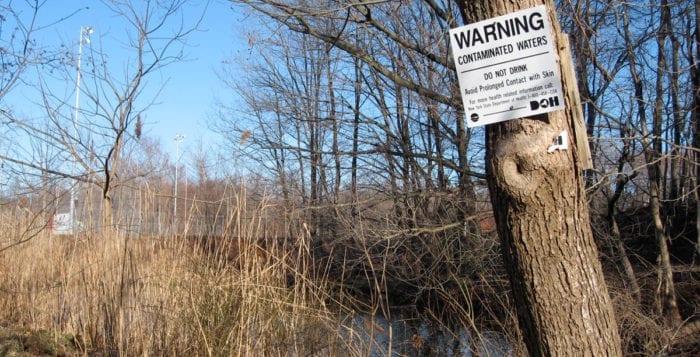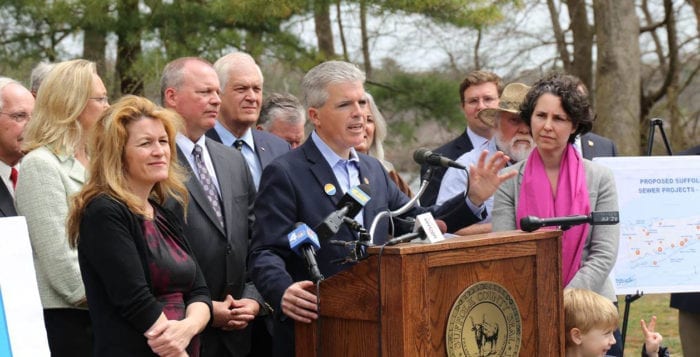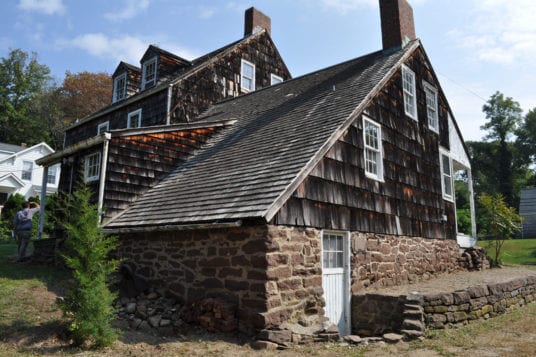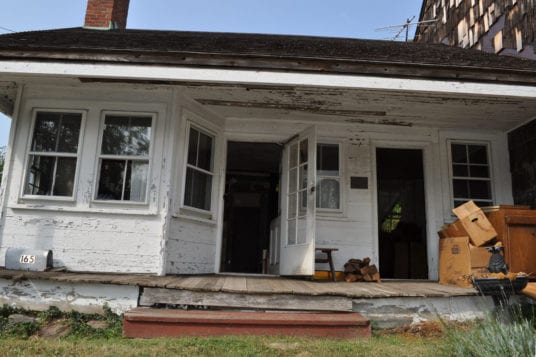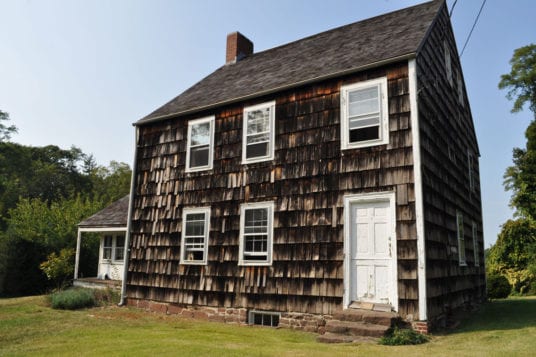There will only be one name on the ballot when residents head out to vote for a mayor in the small North Shore Village of Poquott on June 21, though the race has been anything but uncontested. The same can be said for the two available trustee seats, even though only two names will be on the ballot for those positions.
The plot has seemed at times like it came straight from the popular Netflix series “House of Cards,” which offers what is portrayed as a look behind the curtain of the inner workings of national government and politics. In Poquott the stakes are obviously lower, but after a lawsuit over petitions, closed-door meetings, burned bridges between former best friends and a race between the last two mayors of the village, the tension seems analogous to a presidential election.
Mayoral candidates
Dee Parrish defeated Barbara Donovan to become mayor of the village in 2014. Prior to that Donovan served six two-year terms from 2002 to 2014. Despite being the incumbent mayor and having no desire to step aside, Parrish will not appear on the ballot after a state Supreme Court judge ruled in favor of a lawsuit brought about by Donovan and her running mates. The group calls itself the Party of Unity and Respect, and the lawsuit stemmed from questions about the validity of Parrish’s and three trustee candidate’s petitions. Parrish is still very much a candidate for another term even though residents will have to write-in her name in order to win.
Parrish noted many accomplishments during an interview at Village Hall on Monday, but she said she was most proud of saving the village about $16,000 in her first year and lowering property taxes in her second year.
“That’s enough for me to say I did the best I could,” Parrish said. “I’ve done so many good things that to just stop right now would be a shame, but if that’s what the residents want, I’m okay with it.”
The Poquott resident of 16 years said her focus has always been doing what is best for the village, and win or lose she said she’d like to sit down with Donovan and hash things out.
If Parrish loses, she said she’d offer Donovan a benefit not given to her during her first term two years ago: a transitional meeting. Parrish said Donovan did nothing to make her transition into the position easier when she took over, but that won’t be the case if the roles are reversed.
Parrish studied accounting at Long Island University, where she earned a degree in 1990. She’s worked for her husband Richard’s environmental company in various capacities in recent years, mostly in human relations, she said. She decided to run for mayor in 2014 because she thought the previous administration got “stale” during Donovan’s 12-year run in the position.
In 12 years as mayor Donovan also accumulated a long list of accomplishments of which she’s proud.
In a phone interview on Tuesday she said she helped to bring the village into the 21st century with a website, computers in Village Hall and internal emails for villagers.
“I really feel very strongly about Poquott,” she said. Donovan said her desire to run this time around is similar to what inspired her 14 years ago. “The administration at that time, I didn’t agree with things they were doing. I believe in open communication and transparency. I believe you have to communicate with residents.”
Donovan worked for 30 years in marketing and public relations, and she said those skills made her a natural fit as mayor.
She has also served in the Setauket Fire Department for 28 years.
Donovan said she’s not sure how this campaign cycle became so heated, but she would be willing to a sit down with Parrish at some point to settle their differences and do what’s best for the village.
Trustee race
Sandra Nicoletti is the only incumbent trustee seeking re-election on June 21, though like Parrish, questions about her petition will leave her off the ballot. None of the candidates probed in the suit wished to comment about their petitions.
Nicoletti was best friends with the former mayor, she said.
The retired St. Charles nurse was a trustee during Donovan’s stint in charge, but the two haven’t spoken since Nicoletti decided to run again after Donovan was defeated.
She has lived in the village since 1964 and said the only thing that matters is what’s best for the community.
Nicoletti will need to win as a write-in candidate, which puts her in the same boat as Gary Garofano and John Mastauskas.
Mastauskas is a lifelong Three Village resident and a 1988 graduate from the high school.
The small business owner and father of two who called himself a family man in an emailed statement is running in the hopes of unifying the village.
Mike Schaefer and Joan Hubbard will appear on the ballot and are members of Donovan’s Party of Unity and Respect.
Hubbard has been a permanent resident in Poquott since 2012, though her family has visited for getaways since the 1950s.
She has worked as a village clerk in various North Shore communities, most recently under Donovan in Poquott.
Schaefer has lived in Poquott for 15 years. He worked for Suffolk County in various capacities for 30 years, which he said gives him an advantage as a public servant.
Polls will be open at Village Hall on June 21 from noon until 9 p.m.






